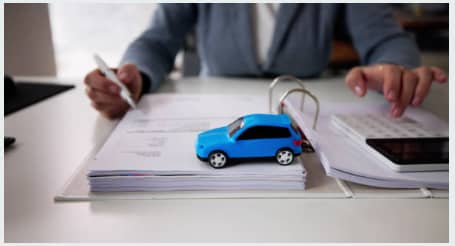Non-Normal Auto Insurance Coverage?
Non-standard auto insurance coverage is a type of insurance designed for individuals who have difficulty obtaining coverage through traditional insurance companies. These drivers typically fall into higher-risk categories due to factors such as a poor driving record, previous accidents, or issues with credit history. In this comprehensive guide, we will explore non-standard auto insurance coverage in detail, step by step.
Step 1: Understanding Non-Standard Auto Insurance
Non-standard auto insurance, also known as high-risk auto insurance, is a specialized form of coverage that is provided to drivers who do not meet the criteria for standard auto insurance policies. This coverage is designed to meet the unique needs and challenges of high-risk drivers.

Step 2: Why Drivers May Need Non-Standard Auto Insurance
Several factors can lead to the need for non-standard auto insurance coverage:
- Driving Record: Drivers with a history of accidents, traffic violations, DUI convictions, or license suspensions are often considered high-risk by traditional insurers.
- Lack of Prior Insurance: If you’re a new driver or have had a lapse in your auto insurance coverage, you may be classified as high-risk.
- Young or Inexperienced Drivers: Teenagers and young adults often face higher insurance rates due to their limited driving experience.
- Credit History: Some insurers use credit scores to determine rates, so individuals with poor credit may be placed in the non-standard category.
- High-Performance or Exotic Cars: Vehicles that are expensive to repair or have high horsepower may require specialized insurance.
- Custom or Modified Vehicles: If you’ve made significant modifications to your vehicle, you may need a non-standard policy to cover these customizations.
Step 3: Coverage Details for Non-Standard Auto Insurance
Non-standard auto insurance policies typically offer the same basic coverage options as standard policies, including:
- Liability Coverage: This covers injuries and property damage you may cause to others in an accident.
- Collision Coverage: This pays for repairs to your vehicle if you’re involved in an accident.
- Comprehensive Coverage: This covers non-accident-related damage to your vehicle, such as theft, vandalism, or natural disasters.
- Uninsured/Underinsured Motorist Coverage: Protects you if you’re in an accident with a driver who doesn’t have sufficient insurance.
- Personal Injury Protection (PIP) or Medical Payments: This covers medical expenses for you and your passengers in case of an accident.
Step 4: Finding Non-Standard Auto Insurance
Finding non-standard auto insurance requires a slightly different approach than shopping for standard coverage:
- Research Insurance Providers: Look for insurance companies that specialize in high-risk or non-standard auto insurance. These providers often have more flexible underwriting guidelines.
- Gather Information: Be prepared to provide detailed information about your driving history, including accidents, tickets, and any previous insurance claims.
- Compare Quotes: Obtain quotes from multiple non-standard insurance providers to compare rates and coverage options.
- Consider Local or Regional Insurers: Some smaller, regional insurance companies may offer competitive rates for high-risk drivers.
- Look for Discounts: Inquire about any discounts you may be eligible for, such as safe driver courses or bundling auto insurance with other policies.

Auto Insurance Coverage
Step 5: Evaluate Coverage Options
When reviewing non-standard auto insurance policies, pay attention to the following factors:
- Coverage Limits: Ensure that the policy offers adequate coverage limits to protect you in case of an accident.
- Deductibles: Consider the deductible amounts for collision and comprehensive coverage, as this will affect your out-of-pocket expenses in the event of a claim.
- Additional Coverage: Depending on your needs, you may want to add optional coverage such as roadside assistance, rental car reimbursement, or gap insurance.
- Policy Terms: Understand the length of the policy term and the renewal process, as high-risk drivers may see improvements in their driving record over time.
Step 6: Apply for Non-Standard Auto Insurance
Once you’ve chosen a non-standard auto insurance provider and policy that meets your needs, follow these steps to apply:
- Contact the Insurance Company: Reach out to the insurance company and inform them that you are interested in obtaining non-standard auto insurance.
- Provide Information: Be prepared to provide detailed information about your driving history and vehicle.
- Get a Quote: Request a quote from the insurer based on your provided information.
- Submit an Application: Complete the application form provided by the insurer, making sure to provide accurate information.
- Underwriting Process: The insurer will review your application and assess your risk profile. This may include checking your driving record and credit history.
- Policy Issuance: If your application is approved, the insurer will issue your policy, specifying the coverage details, premium amount, and payment schedule.
Step 7: Maintaining Non-Standard Auto Insurance
To maintain your non-standard auto insurance coverage, it’s crucial to:
- Pay Premiums On Time: Ensure that you pay your insurance premiums regularly and on time to avoid a lapse in coverage.
- Monitor Your Driving Record: Continuously work to improve your driving record by avoiding accidents and traffic violations, which can help you qualify for standard insurance in the future.
- Review Your Policy Annually: Periodically review your policy to make sure it still meets your needs and consider shopping around for better rates as your risk profile improves.
Step 8: Making a Claim
In the event of an accident or other covered incident, follow these steps to make a claim with your non-standard auto insurance provider:
- Contact Your Insurer: Notify your insurance company as soon as possible after the incident. They will guide you through the claims process.
- Provide Documentation: Complete any claim forms provided by the insurer and provide all necessary documentation, such as police reports, photographs, and repair estimates.
- Cooperate with the Investigation: Be prepared to cooperate with the insurer’s investigation into the incident, which may include providing statements or additional information.
- Claim Resolution: The insurer will review your claim and determine the appropriate settlement based on the terms of your policy.
Auto Insurance Coverage
Step 9: Improve Your Driving Record
While you have non-standard auto insurance, work diligently to improve your driving record. Avoid accidents and traffic violations, attend defensive driving courses if necessary, and maintain a good credit score. These steps can help you eventually qualify for standard auto insurance, which typically offers lower premiums.
Step 10: Seek Professional Guidance
Navigating the world of non-standard auto insurance can be complex, and it’s essential to seek professional guidance if you have questions or concerns. An insurance agent or broker can help you find the right coverage and assist you in managing your policy effectively.
In conclusion, non-standard auto insurance provides a lifeline for drivers who face higher insurance premiums due to various risk factors. By understanding the coverage details, shopping wisely, and working to improve your driving record, you can effectively manage your non-standard auto insurance and eventually transition to more affordable standard coverage when your risk profile improves.

